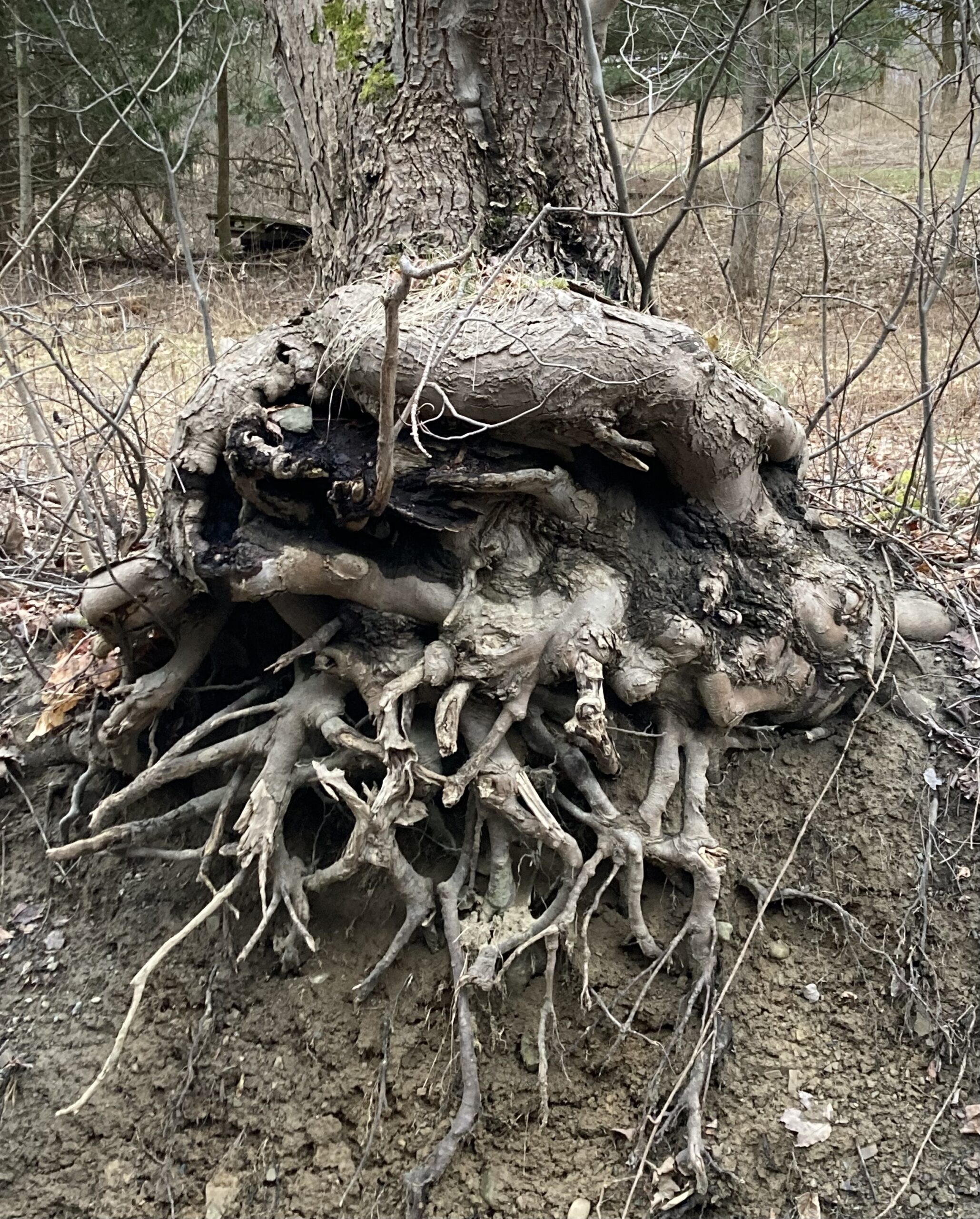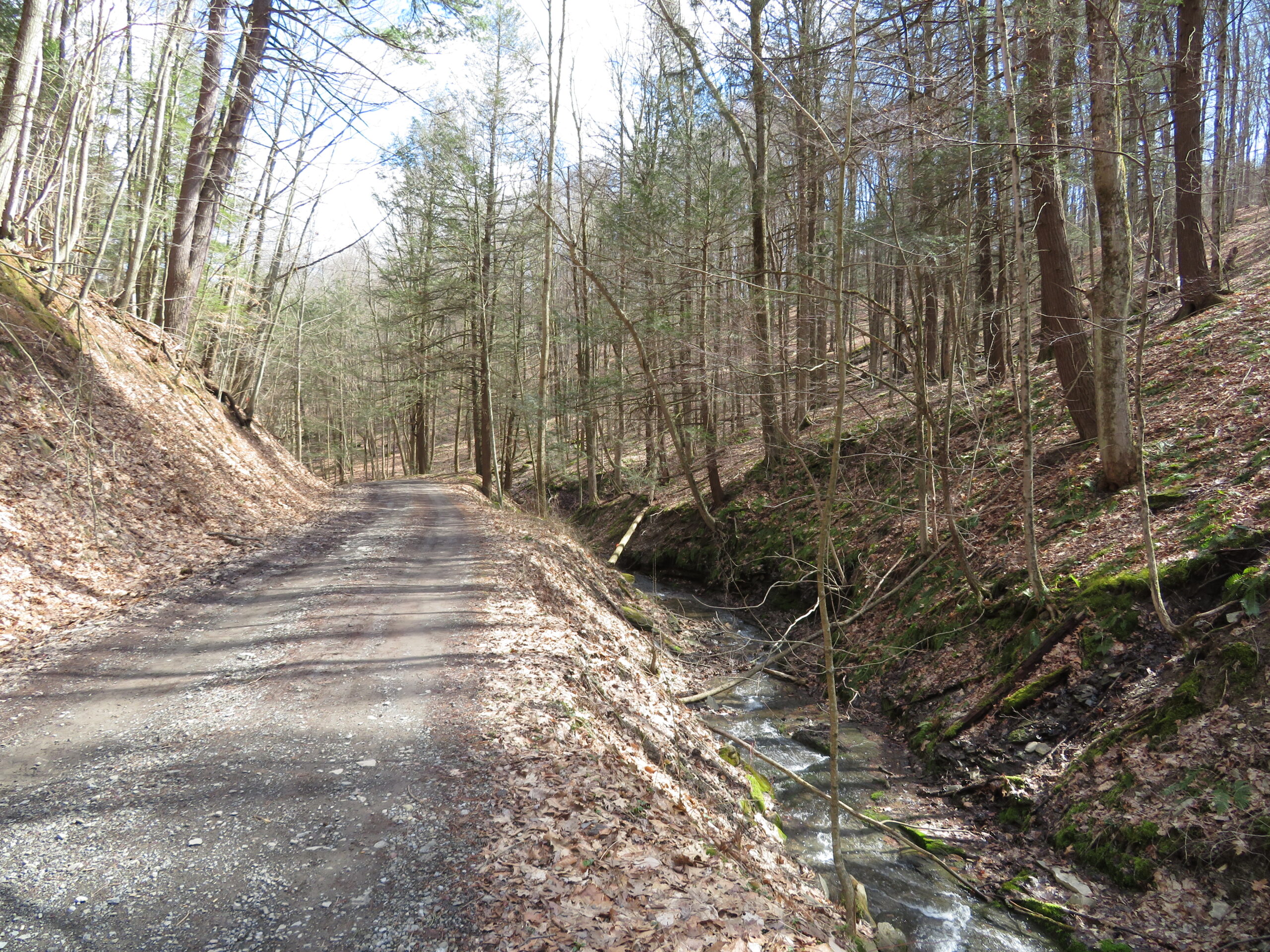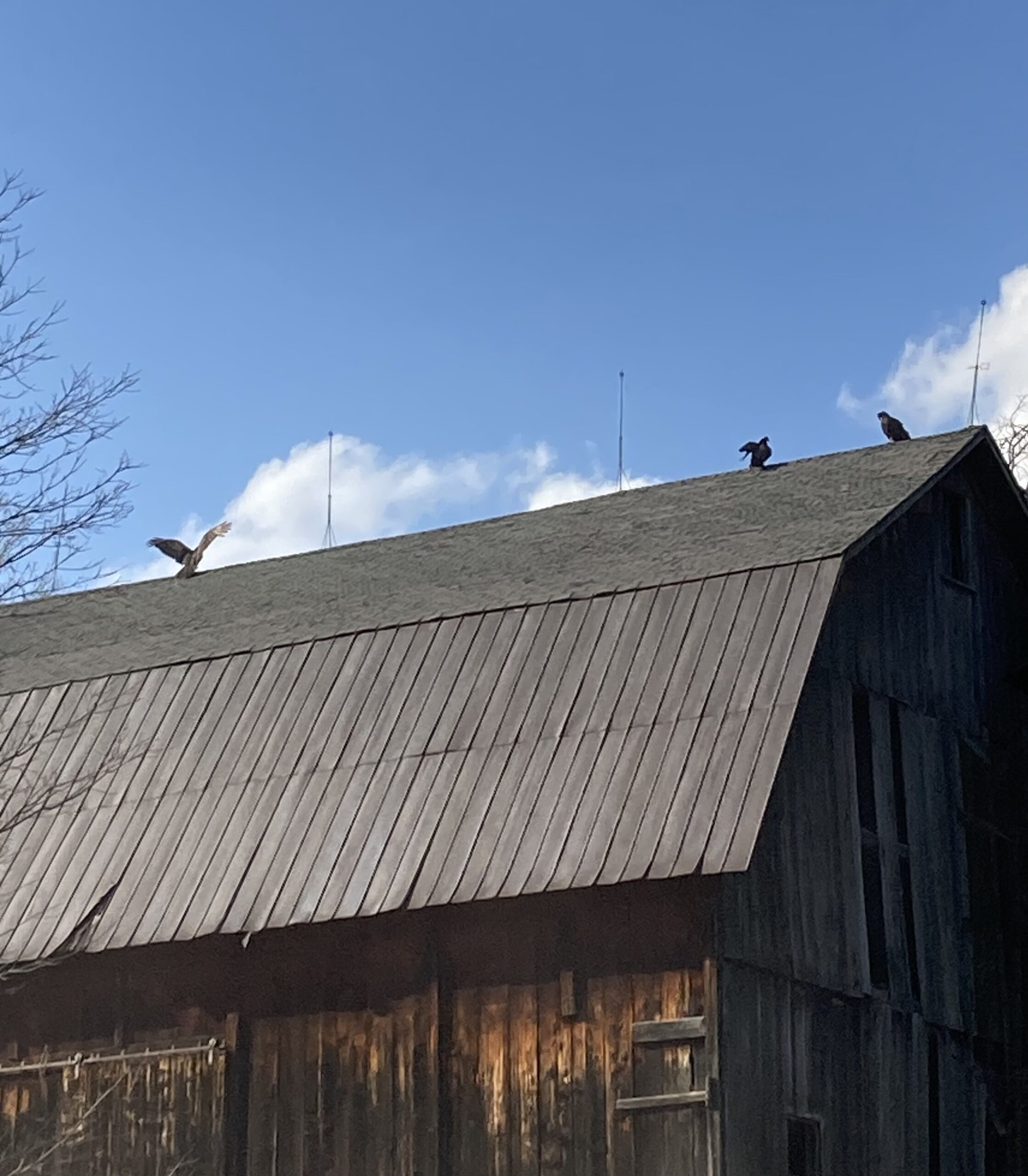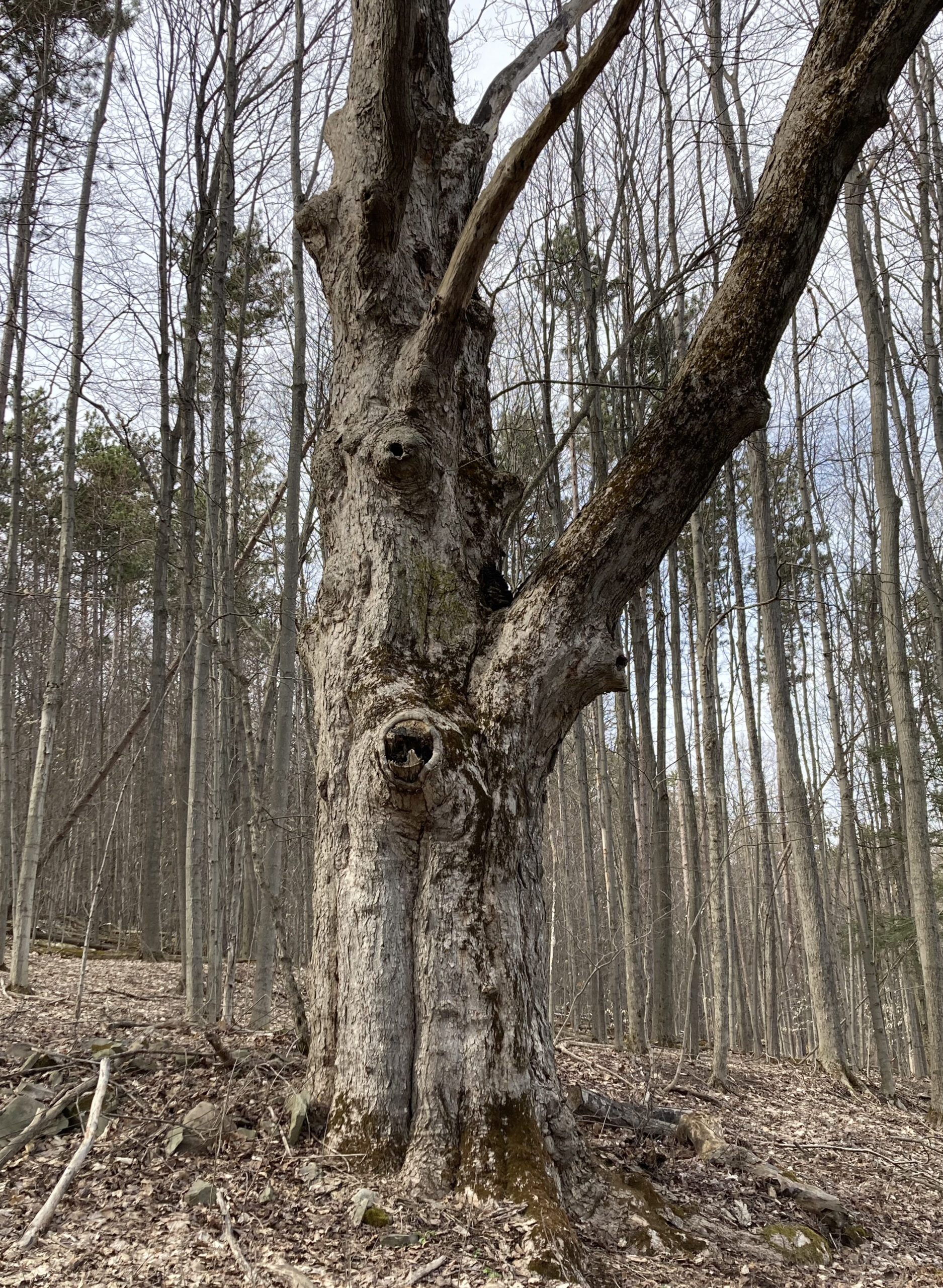My wife and I live in rural America on a dirt road on a sometimes-steep hill. Near our home, rising out of a steep bank, is an old red maple tree whose extensive root structure was torn open years ago when the road department widened the road to accommodate large snowplows. Many of us who live in the neighborhood resisted this move very loudly, because the trees lining the road were beautiful and made the road look so ancient. A neighbor, inspired by other activists in the news at the time, tied herself to one of the trees.
But the resistance was short-lived. The crews with chain saws, excavating machines, backhoes, etc. came up the road cutting trees and carving out the banks. Exposing the roots of this one large tree which remains there even today as a reminder.
Sometimes, when I focus on the tree, it looks beyond sad. I feel a vulnerability, a pain constantly renewed, a wound that can never heal. A wound that we humans caused, we humans with our frequent disregard for the health of the earth we depend on. Other times, the roots look very different, look like a secret layer from underneath the surface of the earth, a mystery that had been exposed. Unseen by us, there’s layers of possibly infinite interconnections all twisted and woven together. This is what we stand on.
Or maybe the two viewpoints are really one. Maybe there’s an infinite layer of vulnerability and pain, life and death woven into everything. And the pain is what we feel when we can’t sense the infinite weave.
We built our house room by room many years ago, in an old, abandoned apple orchard, fitting it in-between trees so we wouldn’t have to cut any. Outside our front door is one that is probably over 100 years old. It barely holds itself together anymore. Its trunk has a large hole running through its center and only three medium-large branches are left alive. It has some blossoms every spring but no edible fruit. Yet, it persists, and we can’t bear to cut it down.
Our cats would object strenuously if we did. They depend on the tree as a ladder to the roof and the second story of the house, where their cat window is placed. They love siting on a limb of the tree and looking down at the wildlife that enters the yard. The tree also provides some shade to the front of the house keeping it cool.
One morning years ago, when we had almost completed the first room of the house, and the tree was younger and still bearing fruit, I went out to feed the birds. We had a feeder, but also scattered seeds on the ground. This was before we had any pets. A few birds quickly appeared. The first was a chickadee. Maybe the tree had been feeding it for years, so when I held out a hand open with seeds, one bird flew into it to grab some food and fly off. I was so excited; I offered my hand again. And the bird, or some bird, returned. Maybe the birds saw us as kin to trees.
The tree speaks to us, although at a frequency beyond our hearing, but not beyond our feeling. It speaks of a bond between us. I used to clean old bark off the tree every spring, which exposed new growth. It felt to me that the tree took it as a massage, because afterwards it always looked refreshed, more colorful, and alive. I don’t know if that feeling was in the tree or in me, or maybe there was no difference. Maybe this was what the tree spoke to me about. About silent bonds. About living for relationships. Maybe because of my affection for the tree, it felt like the tree had affection for me….
*To read the whole article, please go to The Good Men Project.




